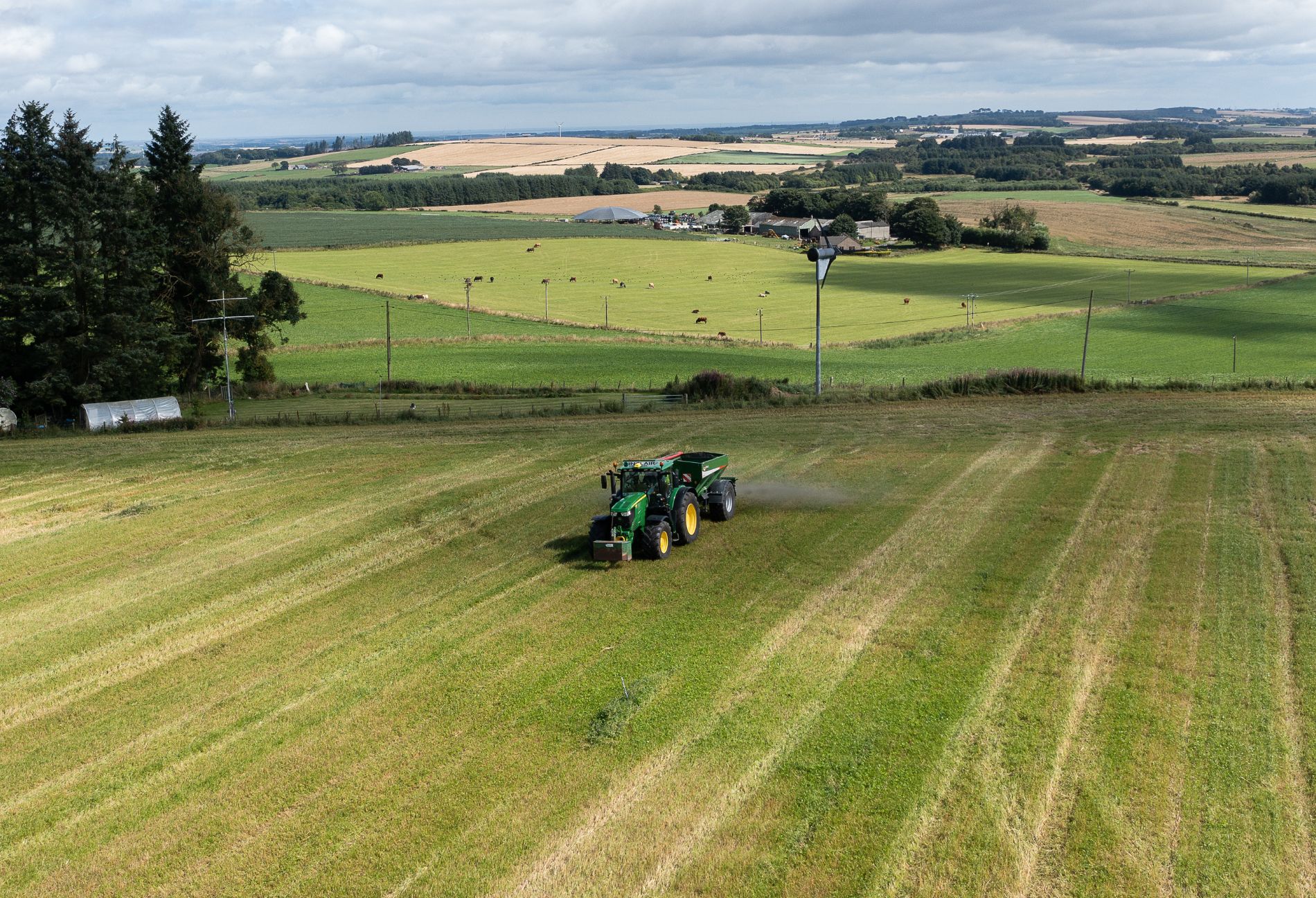As the climate crisis accelerates, businesses must invest in impactful decarbonisation efforts. Effective communication of your company’s carbon strategy is crucial for success, keeping stakeholders engaged with accessible and credible insights into your climate action plan.
But how do you communicate your carbon strategy to stakeholders? With the conversation around decarbonisation in the business world constantly evolving, leaders must be careful not to confuse stakeholders with too much technical information – or to risk allegations of greenwashing. It’s a delicate balance to strike, but a robust communication strategy that prioritises transparency and highlights your commitment to carbon reporting best practices will help you to build all-important trust with stakeholders as you continue your journey to net zero.
Establishing a Solid Foundation for Your Carbon Strategy Communications

1. Select a Credible and Impactful Carbon Strategy
The best carbon strategy ticks the following criteria:
It prioritises decarbonisation. According to the first global standard for net-zero emissions set out by the Science Backed Targets initiative (SBTi), businesses should commit to decarbonising between 90-95% of emissions across their entire value chain by 2050 as a first step in their carbon strategy. This leaves only residual, hard-to-abate emissions left to tackle via investment in carbon offsetting or carbon removal projects.
It incorporates credits verified in line with trusted standards. By selecting certified carbon removal projects aligned with independent standards endorsed by governance bodies such as ICROA or ICVCM, you ensure the offsetting component of your carbon strategy adheres to these rigorous guidelines, thereby fostering stakeholder trust.
It takes a diverse approach. Commit to building a holistic and varied carbon portfolio over time, investing in different projects which all play an important part in your climate contribution and in addressing the climate crisis. For instance, you might choose to invest in a reforestation project alongside an initiative working to restore important blue carbon ecosystems such as mangroves.
2. Identify Key Stakeholders in Your Carbon Strategy
Before you start sharing your climate efforts with stakeholders, it’s helpful to understand who your stakeholders are. This is especially important for new businesses setting out on their decarbonisation journey. Stakeholders can include:
– Investors and shareholders: Interested in financial and environmental returns.
– Company employees: Want to work for a responsible and sustainable company.
– Consumers: Prefer brands that are committed to sustainability.
– B2B clients: Look for partners with strong environmental credentials.
There are also peripheral players to take into account such as the media, the general public, regulators and NGOs. While these parties might not hold financial stakes in your business, they do hold power when it comes to your reputation.
Identifying your business’ stakeholders goes beyond outlining the archetypes. Painting a full picture of the groups invested in your business, and their different interests and concerns when it comes to climate change, will inform how you communicate your carbon strategy. Defining your stakeholders can help you to decide which channels of communication will be most effective, and to create dynamic content to share your climate action efforts across your platforms.
3. Ensure Your Carbon Strategy Adheres to Reporting Best Practices
Transparency is key to maintaining confidence among stakeholders, meaning it’s important that you adhere to the highest possible standards when it comes to reporting on the impact of your carbon strategy. Reporting in line with frameworks such as those provided by GRI or IFRS provides a standardised means to highlight how climate risks are being addressed and how potential opportunities are being benefited from. In conjunction, by aligning with reputable standards in the voluntary carbon market, such as those set by Verra and Gold Standard, your business will be able to demonstrate its commitment to accurate, verifiable reporting of its climate action projects.
The 5 Essential Values for Effective Carbon Strategy Communications

Successful communication of your carbon strategy is built on a strong set of guiding values that sits at the centre of all your comms. So, what values should your carbon strategy communications demonstrate?
Value 1: Embracing Transparency in Carbon Reporting
One of the first steps in any carbon strategy is to measure your business’ carbon footprint. Openly sharing your carbon footprint data alongside your decarbonisation and climate action plans is a great way to make stakeholders feel involved in your journey.
Transparent reporting practices are also a key factor in stakeholder trust. Be sure to set expectations as to how often you’ll be providing your audience with traceable and accessible evidence of your carbon strategy’s positive impact.
Value 2: Ensuring Accuracy in Carbon Strategy Communications
Your stakeholders are likely deeply invested in the fight against climate change and will have a level of knowledge and insight in the area that should be considered and respected as you communicate with them. Let your comms be guided by expert voices and the latest advances, favouring accurate, science-based terminology over popular phrases which hold questionable significance.
Refer to our helpful climate glossary for help navigating the world of climate terminology.
Value 3: Communicating Specific Details of Your Carbon Strategy
When sharing your company’s greenhouse gas emissions assessment with stakeholders, be specific: not only about the areas of your business which need targeting but also about how your carbon strategy will seek to address and reduce these emissions and over what timeline. Be sure to communicate your decarbonisation goals for Scope 1, 2 and 3 emissions related to your business’s activities, so stakeholders understand you have a clear and thorough carbon plan.
Make your carbon strategy relevant to the industry you operate in by using evidence and data to communicate how your emissions reduction activities are contributing to a more climate-friendly future in your field.
What’s the difference between Scope 1, 2 and 3 emissions?
Value 4: Demonstrating Deep Knowledge and Understanding
At the heart of your carbon strategy communications should be a deep understanding of the issue of the climate crisis and businesses’ vital role in addressing it. Communicating from a place of genuine empathy and acknowledgement of the effects of climate change will help you connect with stakeholders on the basis of shared values, concerns and humanity.
Aim to develop a holistic, intersectional understanding of the climate emergency, which takes into account its many negative effects but that also demonstrates an understanding of its opportunities and solutions. Ensure you’re clued up on the latest science and technological innovations, and endeavour to keep up to date on climate justice and the part it plays in the wider green transition.
Value 5: Fostering Positivity Through Solutions-Focused Communication
There’s no denying that climate breakdown is a difficult subject, but keeping a solutions-focussed lens is a sure-fire way to inspire hope and support in stakeholders. Leverage your communications to illustrate how your carbon strategy is providing opportunities and solutions within the green transition, bringing your stakeholders’ attention to co-benefits such as green jobs, better health prospects, increased soil fertility and supportive collaboration with local communities.
Case Study: McLaren Racing and UNDO’s Collaborative Carbon Strategy

An effective carbon strategy is holistic, co-beneficial, and focused on mutual impact. McLaren Racing’s Climate Contribution Programme exemplifies this approach.
By choosing UNDO’s carbon removal solution alongside other carbon projects, McLaren Racing can communicate to stakeholders that their carbon strategy is part of a wider sustainability drive to deliver net-zero by 2040.
UNDO is McLaren Racing’s first enhanced rock weathering partner, making the collaboration mutually beneficial – something well worth highlighting to stakeholders in carbon strategy communications. While UNDO is providing high quality carbon removal on behalf of McLaren, McLaren is helping to scale UNDO’s operations as an early mover in the space.
To keep stakeholders invested in your carbon strategy vision, centre your communications on a commitment to the wider fight against climate change. Demonstrate alignment with internationally respected indicators like the UN Sustainable Development Goals. By spotlighting how your business’ carbon removal efforts are contributing towards shared global aims, your stakeholders will understand that they’re supporting real, tangible impact in the fight against climate change.
Achieving Permanent Carbon Removal: Solutions for Businesses

UNDO’s durable, high-permanence enhanced rock weathering technology offers businesses a trusted carbon removal solution to accelerate their net-zero journey.
Combining time-tested natural methods with innovative technological advances, our carbon removal solution aligns with the Science Based Targets initiative and is certified in line with the ICROA-backed Puro.earth methodology.
With co-benefits including increased soil and ocean health, support for rural economies and alignment with the UN’s Sustainable Development Goals, UNDO delivers carbon removal technology to take your business’ carbon strategy to the next level.

Ready to elevate your carbon strategy?
Speak to our team today to explore how we can support your journey towards achieving meaningful and measurable decarbonisation goals.


 " />
" />
